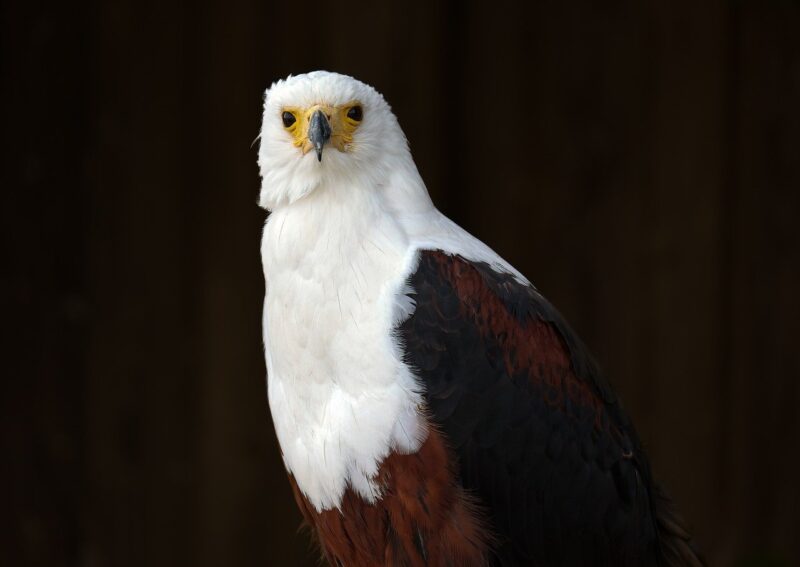How Eagles Hunt: The Impressive Skills That Make Them Top Predators in the Sky
November 13, 2024

Eagles are often regarded as the apex predators of the avian world, unmatched in their hunting prowess and aerial agility. Found across various continents and in numerous environments, these majestic birds embody a combination of strength, precision, and unparalleled adaptability. In this article, we will explore the various techniques employed by eagles in hunting, the physical attributes that enable their success, and the fascinating behaviors that make them icons of the natural world.
1. Overview of Eagle Species
Eagles belong to the family Accipitridae and encompass various species, each with unique hunting strategies. The most well-known eagle species include the Bald Eagle, Golden Eagle, and Harpy Eagle. Here’s a brief overview of their distinguishing features and preferred hunting habitats:
- Bald Eagle: Characterized by its striking white head and tail, the Bald Eagle primarily inhabits wetlands and is often found hunting fish near rivers and lakes.
- Golden Eagle: Notable for its dark brown plumage and golden feathers on the back of its head, this species hunts small mammals and is well-adapted to mountainous regions.
- Harpy Eagle: With its powerful build and prominent crest, the Harpy Eagle is a formidable hunter in tropical rainforests, preying on monkeys and sloths.
Each species showcases unique adaptations to thrive in their chosen environments, further enhancing their effectiveness as hunters.
2. Hunting Techniques: A Look into Eagle Strategy
Eagles utilize a variety of hunting techniques that showcase their incredible agility, precision, and situational awareness. Here are some of the most common hunting methods employed by these avian predators:
2.1. Soaring and Scanning
Eagles are known for their ability to soar at high altitudes. By riding thermal updrafts, they can effortlessly cover vast areas while scanning the ground below for potential prey. The keen eyesight of eagles allows them to spot small animals from great distances—estimates suggest they can see up to four to eight times better than humans!
2.2. Aerial Pursuits
Once an eagle has identified a target, it unleashes its impressive speed and agility. Eagles can dive at speeds exceeding 100 miles per hour, making them formidable adversaries. This incredible aerial pursuit involves skilled maneuvers, allowing eagles to close in on their prey swiftly and decisively.
2.3. Stealth and Ambush
Some eagle species prefer a stealthy approach, utilizing natural cover such as trees or rocky cliffs to surprise unsuspecting prey. By remaining undetected, they can launch an ambush attack, often resulting in a successful hunt.
2.4. Theft and Opportunism
In addition to hunting for their meals, eagles are known to engage in kleptoparasitism, a behavior where they steal food from other birds. This opportunistic approach allows them to conserve energy while still securing a meal.
3. Physical Attributes That Enhance Hunting Capability
The hunting success of eagles can be attributed to several physical attributes that allow them to adapt to diverse environments and hunting techniques:
3.1. Vision
Eagle eyesight is one of their most impressive features. Their large eyes have a high density of photoreceptor cells, enabling them to detect movement and detail at great distances. The ability to perceive ultraviolet light also aids in detecting prey hidden in vegetation or water.
3.2. Talons and Beak
Eagles possess powerful talons, designed to grasp and kill prey quickly. Their sharp beaks are not only effective for tearing flesh but are also vital for feeding on larger animals after the kill.
3.3. Wing Structure
The strong, broad wings of eagles allow for efficient soaring, enabling them to cover large territories while searching for food. Their wing shape also provides the necessary lift and maneuverability during high-speed chases.
3.4. Agile Flight and Body Composition
Eagles have a lightweight skeleton with strong muscles that facilitate agile flight. This anatomical composition enables them to perform agile maneuvers in the air, helping them outsmart their prey and rival hunters.
4. Behavioral Aspects Influencing Hunting Success
Beyond their physical attributes and hunting techniques, several behavioral aspects contribute to the success of eagles in the wild:
4.1. Social Structure
Eagles are often solitary hunters, but some species exhibit social behaviors, hunting cooperatively or hunting in the presence of their partners. This social structure can increase hunting efficiency and survival rates, especially during breeding seasons when food needs are higher.
4.2. Learning and Adaptation
Younger eagles learn to hunt through observation and experience, gradually developing their skills over time. This adaptability allows them to adjust their strategies based on prey availability and environmental conditions, ensuring their long-term survival.
4.3. Environmental Awareness
Eagles have a keen understanding of their surroundings, which enables them to anticipate prey movements and potential threats. This awareness is critical during hunting, ensuring they can exploit every opportunity available in their habitat.
5. Conserving Eagle Populations and Their Role in the Ecosystem
As apex predators, eagles play a vital role in maintaining the balance of their ecosystems. They help regulate prey populations, promoting biodiversity within their environments. Unfortunately, many eagle species face threats from habitat loss, pollution, and climate change. Conservation efforts are essential to preserving these magnificent birds and their habitats:
5.1. Habitat Protection
Conserving and restoring habitats ensures eagles have the necessary resources for hunting, nesting, and raising their young. Protected areas and wildlife reserves play a critical role in safeguarding eagle populations.
5.2. Environmental Awareness and Education
Raising awareness about the importance of eagle conservation and the threats they face is vital in fostering support for conservation initiatives. Educational programs can help communities understand the ecological significance of these birds and encourage stewardship of their habitats.
Conclusion
Eagles are emblematic of the wild, representing strength, freedom, and the beauty of the natural world. Their impressive hunting skills, physical adaptations, and strategic behaviors illustrate why they are revered as top predators in the sky. As we continue to learn more about these magnificent birds, we must also commit to their conservation, ensuring future generations can witness and appreciate their majesty in flight. By understanding their role in our ecosystems, we can take active steps toward preserving the delicate balance between nature and mankind, allowing the legacy of eagles to soar for years to come.







